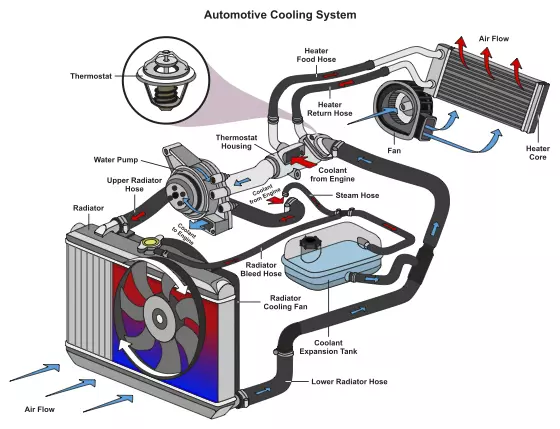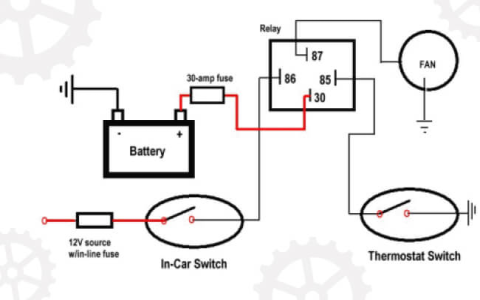The radiator cooling fan control module manages electric cooling fan operation based on engine temperature and other parameters, ensuring optimal engine thermal management.
Cooling System Fundamentals
A vehicle's cooling system regulates engine temperature by circulating coolant. The radiator dissipates heat, while the cooling fan enhances airflow across radiator fins when needed. The control module determines when and how fast the fan operates.
How the Control Module Operates
- Temperature Sensors: The primary input is engine coolant temperature (ECT). An engine control module (ECM) or dedicated control module receives signals from the ECT sensor.
- ECM Processing: The ECM compares ECT readings against programmed thresholds. If temperature exceeds the preset limit, it triggers fan activation.
- Activation Signal: The control module sends electrical signals to fan relays. High-current fan motors are never powered directly by the module.
- Variable Speed Control: Modern modules use Pulse Width Modulation (PWM). By rapidly cycling the relay on/off, the module adjusts average power delivered, enabling multiple fan speeds for precise cooling.
- Secondary Triggers: Modules also activate fans when A/C refrigerant pressure exceeds thresholds, during certain DTC conditions, or after engine shutdown.
Fail-Safes and Features
- Override Functions: Fans may run at maximum speed during overheating emergencies.
- Delayed Shut-off: After engine shutdown, fans often continue running if temperatures remain critical.
- Diagnostic Capabilities: Modules monitor circuits for opens, shorts, and excessive current draw, logging diagnostic trouble codes.
System Integration
The module interfaces with the ECM/PCM, A/C pressure sensors, and vehicle communication networks. This integration allows adaptive control based on load, speed, ambient temperature, and A/C demand.

Core function: Continuously balance engine temperature against parasitic fan load for efficiency, performance, and emissions compliance.

